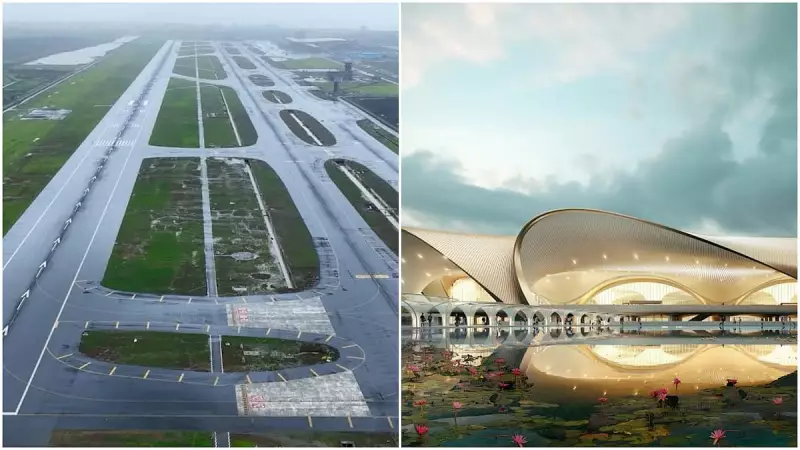
In a significant milestone for Indian aviation, the first commercial flight touched down at the new Navi Mumbai International Airport on Monday, marking the beginning of operations at the much-anticipated facility. The historic flight originated from Bengaluru, successfully completing its journey to the new airport that promises to transform air travel in the Mumbai metropolitan region.
The Historic Landing Details
The inaugural flight was operated by IndiGo, India's largest airline by market share, demonstrating the airport's operational readiness. Flight 6E 5625 took off from Kempegowda International Airport in Bengaluru and made aviation history when it landed at the Navi Mumbai International Airport at approximately 2:05 PM on Monday.
This test flight represented a crucial step in the airport's development timeline, coming just weeks after the Airports Authority of India (AAI) granted the aerodrome its license. The successful landing and subsequent operations validated the airport's infrastructure and operational capabilities ahead of its formal public opening.
Airport Development and Timeline
The Navi Mumbai International Airport project has been developed through a public-private partnership model. The City and Industrial Development Corporation (CIDCO) of Maharashtra has been the nodal agency overseeing this massive infrastructure project. The airport's construction has progressed through multiple phases, with the first phase designed to handle approximately 20 million passengers annually.
According to project officials, the airport is scheduled to commence commercial operations by the end of 2024. The current test flights and operational readiness demonstrations are critical steps toward meeting this deadline. The complete project, when fully developed across multiple phases, is expected to have the capacity to handle 60 million passengers per year.
Strategic Importance for Mumbai Region
The new airport addresses the growing air traffic demands of the Mumbai metropolitan area, which has been solely dependent on the existing Chhatrapati Shivaji Maharaj International Airport. The Navi Mumbai facility will significantly reduce congestion at the current airport while improving connectivity to the rapidly developing Navi Mumbai region and surrounding areas.
Located about 35 kilometers from the existing Mumbai airport, the new aviation hub will serve the entire Konkan region and provide much-needed infrastructure support for economic development. The airport features two parallel runways, modern passenger terminals, and advanced cargo handling facilities designed to position Mumbai as a leading aviation hub in South Asia.
The successful test flight from Bengaluru represents more than just technical readiness—it signals the beginning of a new era for aviation in Western India. As commercial operations prepare to launch later this year, travelers can look forward to enhanced connectivity and modern facilities that will serve the region for decades to come.





